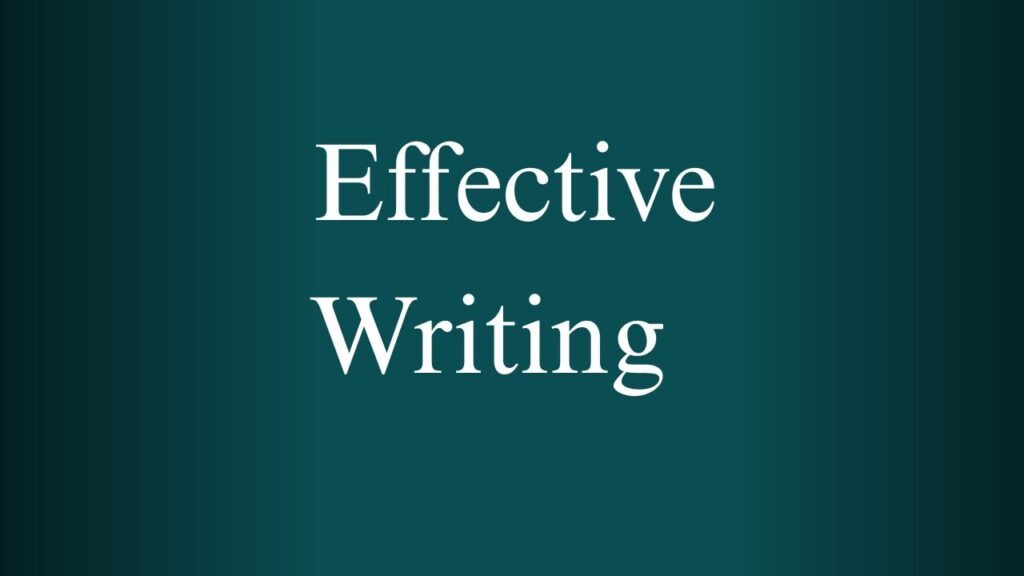NPTEL Plastic Waste Management Week 1 And 2 Assignment Answers 2025
1. What is the resin code of Low density polyethylene (LDPE)?
- a) 1
- b) 3
- c) 4 ✅
- d) 6
✅ Answer: c
Explanation: LDPE has the resin identification code 4, used for marking and recycling purposes. It is commonly found in plastic bags, squeeze bottles, and some food wraps.
2. Which of the following statement is correct?
- a) Plastics can be both thermally and electrically conductive.
- b) Plastics have very low strength to weight ratio.
- c) Plastics can be very resistant to chemicals and corrosion. ✅
- d) Plastics are not water resistant.
✅ Answer: c
Explanation: Many plastics, like PVC and PTFE, are highly resistant to chemicals and corrosion, making them ideal for chemical containers and piping systems.
3. Which of the following is not a thermoplastic?
- a) Teflon
- b) Polyurethane ✅
- c) Nylon
- d) Polycarbonate
✅ Answer: b
Explanation: Polyurethane is a thermosetting plastic, which once set, cannot be melted again. The rest are thermoplastics that soften on heating.
4. Which country is the largest producer of plastic material?
- a) India
- b) United States of America
- c) China ✅
- d) Russia
✅ Answer: c
Explanation: China leads the world in plastic production due to its massive manufacturing sector and export-oriented economy.
5. According to Plastic Europe market research group (PEMRG), which is the market sector having largest plastic demand?
- a) Packaging ✅
- b) Automotive
- c) Electrical & Electronics
- d) Agriculture
✅ Answer: a
Explanation: Packaging consumes the most plastic globally, especially in food and beverage industries due to its lightweight, cost-effectiveness, and durability.
6. Which country has the highest per capita plastic products consumption, according to FICCI report, 2017?
- a) Brazil
- b) Indonesia
- c) China
- d) United States of America ✅
✅ Answer: d
Explanation: The U.S. has one of the highest per capita consumptions due to its advanced economy and high dependency on plastic products in daily life.
7. Which type of plastic has highest demand in India, as per Chemicals & Petrochemical Statistics, 2013?
- a) LLDPE
- b) PET
- c) PVC ✅
- d) HDPE
✅ Answer: c
Explanation: PVC (Polyvinyl Chloride) is widely used in India, particularly in pipes, construction, and packaging, making it the most in-demand plastic.
8. Stabilizers are type of additives added while producing plastics to:
- a) remove fire-propagating radicals like H, OH and others
- b) prolong the lifetime of the polymer by suppressing degradation ✅
- c) improve the plasticity and to impart softness to the plastic
- d) impart strength, hardness and other properties to the plastic
✅ Answer: b
Explanation: Stabilizers help prevent the degradation of plastic from heat, UV light, and oxygen, extending the useful life of the material.
9. Which type of plastic is called as “Poison Plastic”?
- a) LDPE
- b) PS
- c) PET
- d) PVC ✅
✅ Answer: d
Explanation: PVC is referred to as “Poison Plastic” due to the release of toxic chlorine-based compounds during production and disposal.
10. Which of the following is/are additives added to enhance the property of plastics?
- a) Fillers
- b) Plasticizers
- c) Lubricants
- d) All of the above ✅
✅ Answer: d
Explanation: All listed additives are used to modify plastic properties such as flexibility, strength, and processing efficiency.
11. HDPE is the most commonly recycled plastic because it will not break under exposure to extreme heat or cold.
- a) True ✅
- b) False
✅ Answer: a
Explanation: HDPE (High-Density Polyethylene) is durable and maintains integrity across a wide temperature range, making it ideal for recycling.
12. Thermosetting plastics can be recycled
- a) True
- b) False ✅
✅ Answer: b
Explanation: Thermosets undergo a chemical change when cured and cannot be remelted or reshaped, thus non-recyclable.
13. Elastomers deform considerably under load at room temperature and return to their original shape, when the load is released
- a) True ✅
- b) False
✅ Answer: a
Explanation: Elastomers exhibit elastic behavior, allowing them to stretch under stress and recover after removal of the force.
14. Chemical composition of thermoplastics changes on heating
- a) True
- b) False ✅
✅ Answer: b
Explanation: Thermoplastics soften upon heating but do not change chemically, allowing them to be remolded and recycled.
15. Plastics are materials with a seemingly limitless range of characteristics and colors and are easy to manufacture
- a) True ✅
- b) False
✅ Answer: a
Explanation: Plastics are extremely versatile, available in many forms, colors, and characteristics, and are easily manufactured at scale.
NPTEL Plastic Waste Management Week 2 Assignment Answers
1. Which sector is the maximum contributor to plastic waste, according to Mudgal et al., (2011)?
- a) Agriculture
- b) Building & Construction
- c) Packaging ✅
- d) Automobile
✅ Answer: c
Explanation: The packaging sector contributes the most to plastic waste because it involves single-use plastics like wrappers, bags, and containers, which are discarded immediately after use.
2. What are small pieces of plastic derived from the breakdown of larger plastic debris called?
- a) Microbeads
- b) Micro plastics ✅
- c) Plastic pellets
- d) Scrubbers
✅ Answer: b
Explanation: Microplastics are tiny plastic particles (less than 5 mm) that result from the degradation of larger plastic waste due to sunlight, heat, or physical abrasion.
3. Which river is the highest contributor of plastic waste?
- a) Yangtze ✅
- b) Indus
- c) Nile
- d) Amazon
✅ Answer: a
Explanation: The Yangtze River in China is considered the largest contributor to marine plastic pollution due to heavy industrial activity and population along its banks.
4. Which is the lowest consumed virgin plastic resin in India according to world scientific publishing co. 2014?
- a) LDPE
- b) HDPE
- c) PVC
- d) PS ✅
✅ Answer: d
Explanation: Polystyrene (PS) is the least used among virgin plastic resins in India, largely due to its brittle nature and environmental impact concerns.
5. From 1970 to 1995, which component of the MSW has recorded the highest growth rate in weight proportion, according to world scientific publishing co. 2014?
- a) Plastics ✅
- b) Glass
- c) Paper
- d) Metals
✅ Answer: a
Explanation: Plastics have shown the highest growth rate in municipal solid waste due to increased usage in packaging and disposable products.
6. Which state is the largest producer of plastic waste in India according to CPCB report, 2017?
- a) Tamil Nadu
- b) Maharashtra ✅
- c) Gujarat
- d) Punjab
✅ Answer: b
Explanation: Maharashtra generates the most plastic waste in India, largely due to its large urban population and industrialization.
7. According to Eunomia consultant firm of UK, what is the amount of plastic entering the marine environment?
- a) 9.8 Million tonnes
- b) 10.3 Million tonnes
- c) 11.5 Million tonnes
- d) 12.2 Million tonnes ✅
✅ Answer: d
Explanation: As per Eunomia, approximately 12.2 million tonnes of plastic enter marine ecosystems annually, harming marine life and biodiversity.
8. Which of the following statement(s) is/are correct?
- a) ✔
- b) ✔
- c) ✔
- d) All the above ✅
✅ Answer: d
Explanation: All three statements are correct, describing the formation, categorization, and impacts of plastic waste in the environment.
9. According to ourworlddata.org, which type of plastic waste source (by plastic use) is of greatest mass in the Great Pacific Garbage Patch?
- a) Hard plastic, plastic sheet & film
- b) Plastic lines, ropes & fishing nets ✅
- c) Preproduction plastic pellets
- d) Foamed plastic material
✅ Answer: b
Explanation: Fishing-related debris like ropes and nets make up a large portion of the waste in the Great Pacific Garbage Patch.
10. According to Ericksen et al., 2014, which ocean/marine basin has the largest quantity of plastic waste floating at the ocean surface?
- a) North Pacific ✅
- b) North Atlantic
- c) South Pacific
- d) South Atlantic
✅ Answer: a
Explanation: The North Pacific is home to the Great Pacific Garbage Patch, making it the most plastic-polluted ocean region.
11. Marine litter is human-created waste that has been deliberately or accidentally released into a sea or ocean during shipping, fishing or aquacultures.
- a) True ✅
- b) False
✅ Answer: a
Explanation: Marine litter results from human activity, both intentional (dumping) and accidental (fishing gear loss).
12. Micro beads are not used in various personal care and cosmetic products.
- a) True
- b) False ✅
✅ Answer: b
Explanation: Microbeads have been used in cosmetic products like exfoliators and toothpaste, although banned in many countries now due to environmental harm.
13. Plastic litter directly into the rivers, streams and drains can be a cause of clogging of drains and can be breading spaces for mosquitos causing human health hazard
- a) True ✅
- b) False
✅ Answer: a
Explanation: Accumulated plastic blocks drainage systems, leading to water stagnation and providing breeding grounds for disease-carrying mosquitoes.
14. Micro bead particles can easily be filtered out by wastewater plants?
- a) True
- b) False ✅
✅ Answer: b
Explanation: Microbeads are too small to be captured by conventional filtration systems, thus entering rivers and oceans.
15. Plastic Consumption in India by industrial goods sector is the highest according to, World Scientific Publishing Co, 2014
- a) True
- b) False ✅
✅ Answer: b
Explanation: The packaging sector, not industrial goods, accounts for the highest plastic consumption in India.



